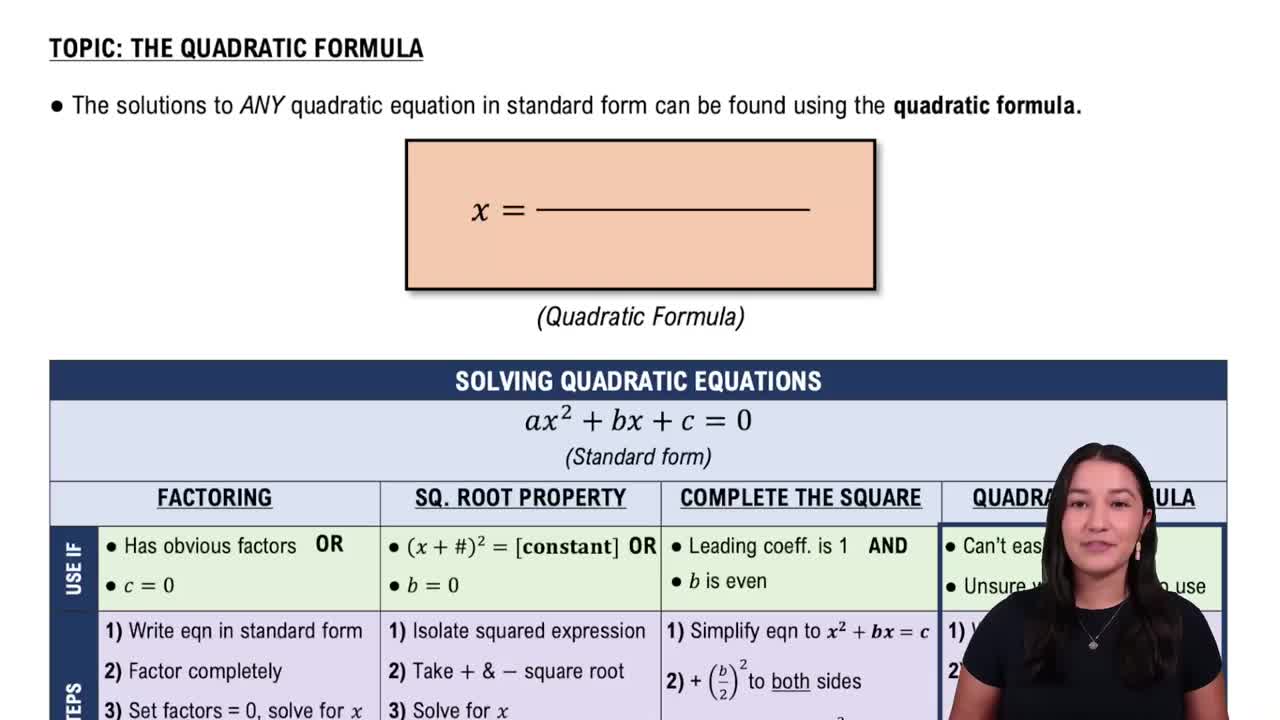Here are the essential concepts you must grasp in order to answer the question correctly.
Inequalities
Inequalities are mathematical expressions that show the relationship between two values when they are not equal. They can be represented using symbols such as ≤ (less than or equal to), ≥ (greater than or equal to), < (less than), and > (greater than). Understanding how to manipulate and solve inequalities is crucial for determining the range of values that satisfy the given condition.
Recommended video:
Quadratic Functions
A quadratic function is a polynomial function of degree two, typically expressed in the form f(x) = ax^2 + bx + c, where a, b, and c are constants. The graph of a quadratic function is a parabola, which can open upwards or downwards depending on the sign of 'a'. Analyzing the properties of quadratic functions, such as their vertex, axis of symmetry, and intercepts, is essential for solving quadratic inequalities.
Recommended video:
Solving Quadratic Equations Using The Quadratic Formula
Graphing Utilities
Graphing utilities are software tools or calculators that allow users to visualize mathematical functions and inequalities. By plotting the graph of a function, one can easily identify the regions where the function meets the inequality condition. Utilizing graphing utilities is particularly helpful in solving complex inequalities, as they provide a visual representation that aids in understanding the solution set.
Recommended video:
Graphs and Coordinates - Example
 Verified step by step guidance
Verified step by step guidance Verified Solution
Verified Solution

